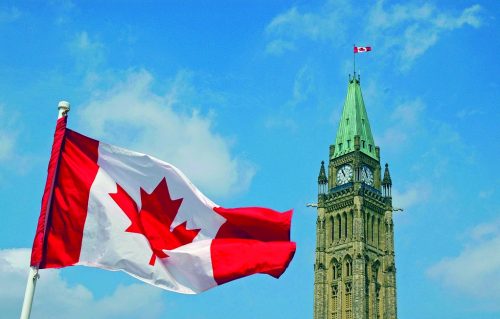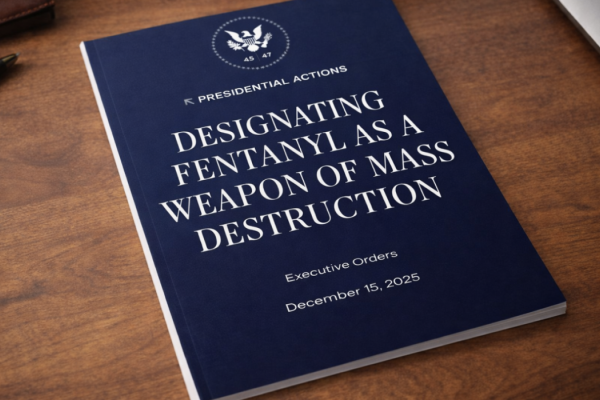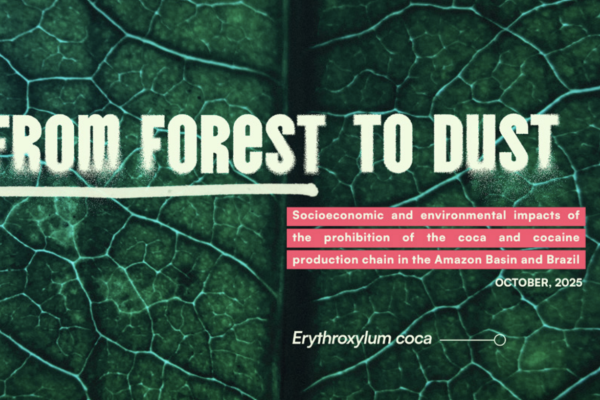25th October 2019
On the one year anniversary we asked 5 leading Canadian policy experts on their view on how the groundbreaking new policy was progressing......
What has gone well and what has gone less well, In terms of the preparation and roll out of the regulated market?
Scott:
One year into legalization and we still only have a handful of retail stores in Vancouver. Although a lot of licenses have been issued, the process is getting stuck in the rollout on a more local level (i.e. zoning approvals, etc.). In provinces where there has been greater uptake, there is likely less of an existing entrenched market (i.e. the grey market dispensaries and illegal dealers) to displace, but there are also likely less bureaucratic barriers to participation in the market. There are also reported shortages of supply but those are likely just teething problems, as are reported quality issues.
Generally, what has gone well is that there is now in place a comprehensive system of legal regulation that spans all levels of government, from federal to provincial to municipal. That a federated government could undertake such a transformative shift in policy and implement it through law and policy without significant backlash from provinces or law enforcement to the degree that it’s stymied is pretty significant.
That said, the actual on the ground implementation has left a lot to be desired. BC – largely recognized as one of the largest cannabis consuming populations – has been notably slow in the rollout. Ontario – with the largest population in Canada – is hardly better. Per capita, BC is at the bottom of the provinces for retail sales of legal cannabis – roughly one-tenth the per capita sales of Prince Edward Island and one-fifth of our neighbour Alberta. One can attribute this to “consumer inertia” (i.e. people are happy with their illegal dealer) but it’s hard to argue about changing the status quo when there really aren’t sufficient alternatives available to people.
One year into legalization and we still only have a handful of retail stores in Vancouver. Although a lot of licenses have been issued, the process is getting stuck in the rollout on a more local level (i.e. zoning approvals, etc.). In provinces where there has been greater uptake, there is likely less of an existing entrenched market (i.e. the grey market dispensaries and illegal dealers) to displace, but there are also likely less bureaucratic barriers to participation in the market. There are also reported shortages of supply but those are likely just teething problems, as are reported quality issues.
Akwasi:
I think things have generally been quite successful with respect to the roll out of recreational cannabis in Canada. This is especially true when we consider just how quickly our legislation was introduced, passed and implemented.
The biggest observation I’ve made with respect to the rollout is that our legalization did not come as a response to a recognition of the racialized harms caused by prohibition. Indeed, our brand of legalization was largely a political and an economic move. The stated aims of Canadian legalization are to 1) protect youth; 2) promote public health; 3) reduce illegal trade in cannabis. As a result, Canadian cannabis legalization lacks many of the measures intended to repair the harms inflicted on vulnerable communities that have resulted from the war on drugs.
For example, having acknowledged that drug prohibition has had a disproportionate impact on Black and Latino populations in the United States, many jurisdictions have incorporated reparations measures into legalization. The most common of these measures include 1) the expungement and clearing of cannabis related criminal records; 2) policies and initiatives to ensure that people and communities affected by prohibition are provided an opportunity to participate in the legal cannabis industry and 3) strategies to allocate a portion of the revenue generated from legal sales back into the communities most harmed by prohibition – these funds can go to improve community health and well-being (e.g. through neighbourhood investment funds – thinking funding for community centres, jobs and skills development programs etc.).
It was only as a result of the tireless advocacy of interest groups that the Canadian government has provided for cannabis related criminal record “suspensions” (not full expungement). Incorporation into the legal industry and the allocation of tax revenue are not even points of discussion. My advice to jurisdictions looking to legalize cannabis is to ensure all of these measures are included in legalization from the outset – they must be written into law. If cannabis legalization is to be just and fair, and not a driving force of further social inequality, reparations must be a central pillar.
Jenna:
Generally there has been some very positive developments but lots of bumps along the way. As the market matures, better quality cannabis and comparable pricing becomes increasingly in reach, which addresses a key goal of Canadian legislation - undermining the illicit market. The market has really struggled with access to (good quality) supply as it grows, which has meant getting people who use cannabis to shift from unregulated to regulated access is ongoing. The prices are still high (for mediocre to poor quality in many cases), and they’re coupled with sales and excise tax - so we are only seeing a slow shift.
But many of the anticipated negative outcomes haven’t really materialized – there was only a slight increase in new adult cannabis users, youth consumption has remained stable, as well as reported driving under the influence of cannabis incidences. Also, the creation of the Canadian Cannabis Survey by the federal government one year before legalization has proven to be a really valuable tool to assist with monitoring the changes and allowing for more in-depth data collection around usage patterns, purchasing patterns and access than we gather from other national level surveys on substance use.
Canada was also in a pretty unique position in that illegal medical cannabis dispensaries had proliferated across Canada - so questions around how to "undermine" the illegal market become a lot more challenging when there are these online and brick and mortar avenues that have good quality products, were found at one point all across Canada. The illegal market is seemingly more sophisticated in that you're choosing from a variety of strains, other cannabis products like edibles are found in professional looking (but noncompliant!) packaging and branding, and you can actually access more products than found on the current legal market. While the brick and mortar shops have mostly closed now, there is still a very extensive online network of "mail order marijuana" or MOM shops found outside the regulated system. Policing these stores is difficult, if not impossible, and the answer probably lies in making legal cannabis more competitive in quality and pricing.
What has been perhaps the most challenging is the way cannabis legalization has unfolded within our provinces and territories, and local governments. This knowledge translation has been challenging for government bodies, and across the country, provincial roll out has left much to be desired which is continuing to fuel the illicit market. This is a key issue other countries should consider – how to pass this information to other government bodies and agencies and acknowledging the time, effort and resources provincial and municipal governments have to invest in making this shift a smooth one. While there is certainly a balance between safety, availability and access, the varying approaches across provinces have mostly left cannabis access- especially in person – challenging and expensive – particularly for those living outside of major cities. A great example is Ontario, Canada’s most populated province, which currently has online government access, and 25 independent stores authorized with another 40 opening over the next year. Five of those stores exist in Toronto – and are relatively close to one another in the downtown core. The current population of the city's core is believed to be about 250,000 which is really a fraction of the 3 million people in Toronto – so a lot of discussion has revolved around convenience, access and availability for adults. This is obviously something that will change as the market matures. Also, drawing on some research we did in Vancouver’s Downtown Eastside, we also need to consider there are pretty substantial barriers to legal cannabis for poor and marginalized communities, including things like cost and ID requirements.
Provinces have certainly varied with their approaches, but municipalities have also created significant barriers to the licensing of cannabis growing facilities in Canada. Many are lacking nuanced information need to make local level decisions around their approvals and how to meet the concerns of local communities (e.g., smell, light, security), and many have simply banned all cannabis production. There is something to be learned around how knowledge is translated through multiple levels of government, and the importance of training and education to be able to practically and effectively regulate this emerging market responsibly. That said I think its important we talk up the benefits of legalization for the Canadian population, one of which is around job creation and the revitalization of many rural communities in Canada, and there are also numerous examples of how that has been done.
Akwasi:
The question about access to medicinal cannabis following the introduction of the recreational market is also an interesting one. There were certainly concerns about a lack of access to medicinal cannabis for medical patients after recreational legalization. Advocates for medicinal users voiced concerns that patients’ needs were not being addressed and that industry attention had turned to profit making from recreational users. Long wait times for deliveries, and poor customer service certainly drove medical patients from one supplier to another as they sought access to the cannabis they needed. I think many also simply bought from recreational channels when faced with a lack of access to their medicine or turned back to the illegal market As with recreational cannabis more generally, I think or at least I hope, this is a problem that will be worked out as the industry matures, and both supply and demand become more consistent.
Unlike other medicines, medicinal cannabis is subject to taxation. This drives up the cost for patients and is considered by many to be unfair. From the government perspective, I think there is concern that individuals will abuse the medical system in order to get themselves access to cheaper product. This might not be an easy issue to deal with, but I think still presents an issue of equity for those in need.
Dan:
One major issue is the lack of an emphasis on or incentives for a non-profit stream in the development of regulatory structures across all the provinces and territories. In the context of Ontario, I can tell you that this was completely absent from the provincial government’s planning. The problem here is that without a focus on smaller non-profit models (like the members-only club model in some Western European countries), the market quickly gets saturated by larger players. It then makes it difficult to introduce these smaller models at a later date and establishes a for-profit incentive immediately.
The other issue is availability. National distribution streams were initially woefully under-resourced initially (as this was almost entirely mail-based at first). Specifically in Ontario, the rollout of physical stores has been overly cautious, which has allowed for the illegal cannabis market to continue to serve the large market of people who do not have access to physical stores. This undercuts the primary goal of cannabis regulation – dismantling the illegal market – and has allowed illegal players to entrench their position alongside the legal regulated market.
What do you think about the idea of the phased roll out - with edibles and concentrates coming online later this year?
Scott:
There’s a lot of impatience generally about the phased rollout, but I would say it’s a pretty good strategy overall. Particularly since the actual implementation for the first phase was done pretty quickly. I imagine that there would have been challenges around edibles had they been launched at the same time. Given the issues with unregulated cannabis vaping products now, I think it makes sense to fast-track pre-made and quality smokable vaping products.
Jenna:
I appreciated this [phased roll out] approach because of the complexities involved with creating legislation around the regulation of these products that have so many other considerations around food handling, additives, safety, education and packaging. The undertaking of legalization cannabis was massive, and so I think the phase approach was a sensible one. It would be worse to rush that part of the legislation, as we’ve seen in some states in the US, which inevitably led to some preventable experiences. I think it’s allowed more time to be spent consulting and developing regulations around extractions and infusions, and engage stakeholders more meaningfully as a second phase.
I would have liked to have seen more public education leading up to the second phase – particularly around food infused cannabis products and beverages. Much of the millions of dollars set aside by the federal government for education has gone unspent. This is a bit concerning in the sense that we’re seeing edibles and other products coming online soon are pretty popular in other legal markets. The potential to over-consume is higher because of the delayed onset and difficulty understanding dosages. From my perspective as someone who also works with a small cannabis-focused nonprofit, accessing to the government funding to do that work is challenging, time consuming and lengthy.
Akwasi:
I generally support the slow, phased-in approach that Canada has taken. I think it is wiser to be cautious at the outset, rather than allowing for a free-for-all with sales and marketing and then needing to reign things back in. This slow approach has bothered some Canadians but in my view it was good public policy.
Nazlee:
I appreciate the need for adequate time to establish policy and regulations, the phased approach has meant that the criminal market has continued to meet demand for cannabis edibles, extracts, and topicals in the interim. Although federal regulations for the legal sale of these products come into effect on October 17, they will not be available at retailers until at least mid-December given the time needed for approvals, production, and distribution. Moreover, the regulations in place - such as 10 milligram THC per package limit for edibles - may pose challenges in displacing the criminal market. An iterative approach to regulations for these cannabis products will therefore be needed in the coming months and years to allow for tweaks in response to consumer demand and appeal of the criminal market.
How has the state controlled retail model that most provinces adopted worked out?
Jenna:
It’s been a really mixed bag across Canada – we have complete state controlled, a mix of both state controlled and private retail, as well as all private retail. Many provinces also adapted some type of cap on the amount of retail stores that can be owned or controlled by one or more licensed cannabis producer or their affiliates.
Ontario went live with online sales through the state-controlled corporation created to manage cannabis sales. At first, it was going to rely exclusively on this corporation to sell cannabis both online and in person, much like alcohol is treated in the province, but with a late government change, the store application process was opened last minute to private retail with online government sales (only). The private retail was chosen through a lottery system with some restrictions – but the process has left the most populated province with less than 25 stores.
It’s really too early to tell how different models of access measure up, but we know from alcohol that increase in access and availability across Canada can be associated with more health harms. Cannabis is an imperfect comparison because its profile is so different but it will be interesting to see how the long term data shapes up – it’s really a range of different regulatory experiments across Canada.
Akwasi:
It is a bit unfortunate that Ontario, Canada’s most populous province, saw a change in government just months before legalization took effect. The new government decided to overhaul existing plans around cannabis sales, leading to a shortage of retail outlets, which I think has negatively impacted Ontarians views of legalization.
As the infrastructure grows and the industry matures, my view is that these issues will work themselves out. Relatedly, I think the illegal market for cannabis will diminish over time. Some Canadians were concerned that a large proportion of consumers continued to obtain their product from illegal sources and pointed to this as a failure of legalization. Conversely, I see this as a result of a lack of access to legal cannabis for some, (like those in Ontario that do not live in close proximity to a legal retail outlet), continued skepticism about “government weed” among others, as well as people simply continuing to purchase from their existing (illegal) supplier with whom they might have a good relationship and feel comfortable buying from. The higher price of legal cannabis would be a factor here too.




